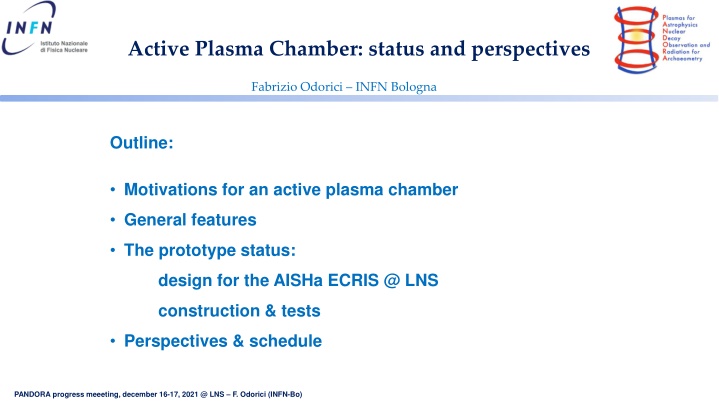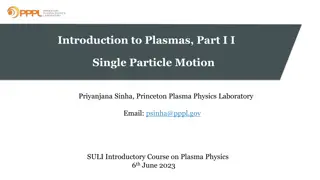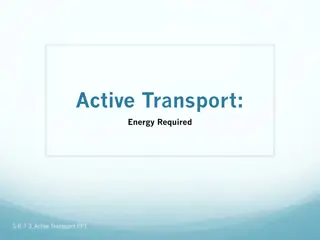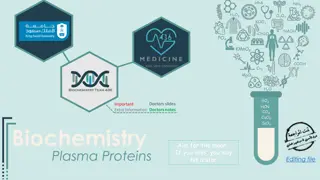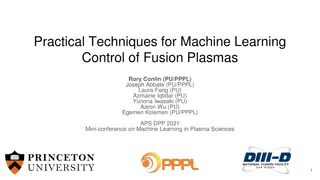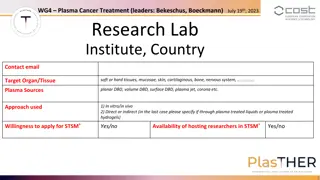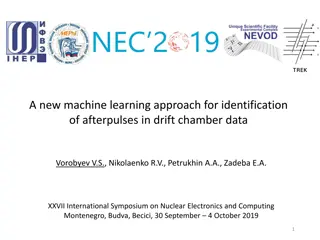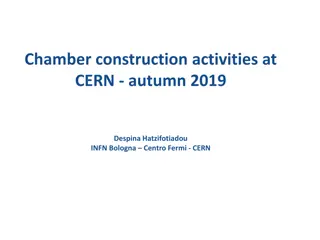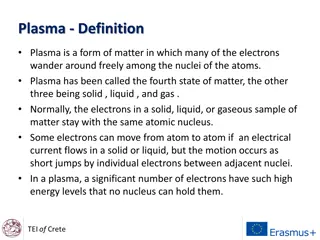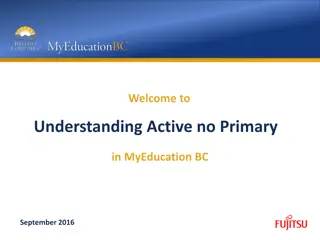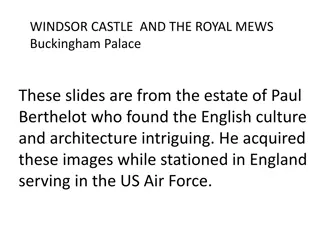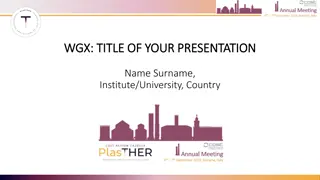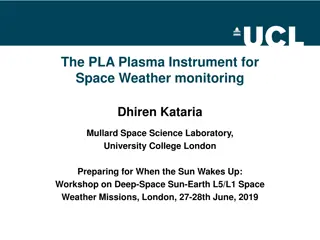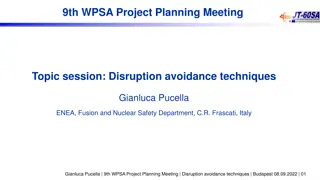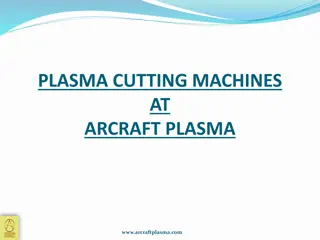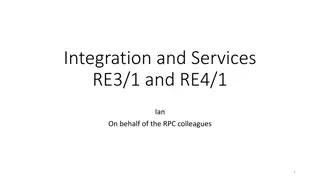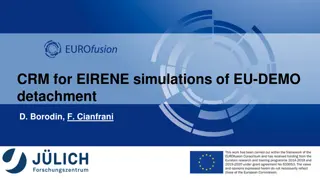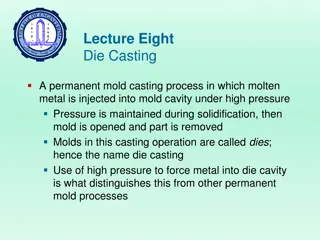Active Plasma Chamber: Status and Perspectives
A detailed overview of the motivations, features, and construction status of the active plasma chamber prototype at LNS, presented by Fabrizio Odorici from INFN Bologna. The design considerations, structure elements, and benefits of the chamber are discussed, highlighting its potential for enhancing plasma charge distribution and reducing losses. The innovative solution involving segmented elements with variable bias, aluminum components, magnetic traps, and real-time monitoring offers insights into the future prospects of the project.
Download Presentation

Please find below an Image/Link to download the presentation.
The content on the website is provided AS IS for your information and personal use only. It may not be sold, licensed, or shared on other websites without obtaining consent from the author.If you encounter any issues during the download, it is possible that the publisher has removed the file from their server.
You are allowed to download the files provided on this website for personal or commercial use, subject to the condition that they are used lawfully. All files are the property of their respective owners.
The content on the website is provided AS IS for your information and personal use only. It may not be sold, licensed, or shared on other websites without obtaining consent from the author.
E N D
Presentation Transcript
Active Plasma Chamber: status and perspectives Fabrizio Odorici INFN Bologna Outline: Motivations for an active plasma chamber General features The prototype status: design for the AISHa ECRIS @ LNS construction & tests Perspectives & schedule PANDORA progress meeeting, december 16-17, 2021 @ LNS F. Odorici (INFN-Bo)
Motivations for an Active Plasma Chamber A combined solution: Problems that should be cured: We can divide the camber surface into segments and apply a given bias to each segment in order to reduce (& monitor) plasma losses An efficient plasma magnetic trap should have small losses along radial (ions) and axial (electrons) components. However, imperfections in the magnetic trap produce plasma losses. A inner chamber made of aluminum is able to enhance the Charge State Distribution towards highly charged ions. This because Al has a coefficient of secondary electron emission greater than 1 (electron donor) for a large energy range of impinging electrons We would be able to enhance plasma charge towards highly charged ions state distribution PANDORA progress meeeting, december 16-17, 2021 @ LNS F. Odorici (INFN-Bo)
General features of the plasma chamber The PANDORA plasma chamber consists of two parts The MAIN chamber: The INNER active chamber: Aluminum elements: 30 tails (5 axial x 6 radial), 3 mm thickness. Each element has a variable bias. A stainless steel cylinder and two end- caps: 300 mm outer diameter, 700 mm length, 10 mm thickness. Strong structure with mechanical strength and rigidity to connect many devices through holes . Outer stainless-steel main chamber 60 radial segmentation Bias & Sense electronics Inner Al Axial segmentation multiring chamber Axial bias disk PANDORA progress meeeting, december 16-17, 2021 @ LNS F. Odorici (INFN-Bo)
General features of the inner active chamber Up to 30 aluminum segments (5 axial x 6 radial), 3 mm thickness: each segment anodized (electrochemical anodic oxide) on external surface and edges so that, electrically isolated from the neighbour. each segment polarized with individual bias by current-voltage measurement circuit (to reduce radial losses and to measure plasma leakage currents) active control of the bias voltages with automatic search for the best bias map, for any PANDORA working condition (pressure, RF, etc) Aluminum gives a Secondary Electron emission Yield (SEY) greater than 1 for a large energy range (< 3.2 keV) of impinging electrons. The Al chamber permits to operate with lower pressure and RF power, thus limiting charge exchange process and recombination s in the plasma, which is very important in order to produce highly charged ions. F. Wang et al., Coating 2018, 8, 249 PANDORA progress meeeting, december 16-17, 2021 @ LNS F. Odorici (INFN-Bo)
Additional benefits for an Active Plasma Chamber Additional benefits: The bias of segmented elements allow real-time monitoring of variation of plasma losses due to any unstable condition The replacement of the inner chamber can be done in a relative short time, allowing to remove chamber contamination from radioactive isotopes (switch to a new physics case) PANDORA progress meeeting, december 16-17, 2021 @ LNS F. Odorici (INFN-Bo)
Prototype: design for the AISHa ECRIS @ LNS Work is under IONS experiment (INFN 5th Scientific Commission) Mechanical design of the active chamber to be compatible with the Advanced Ion Source for Hadrontherapy (AISHa), which is a compact ECRIS: > operating at 18 GHz (upgrade to 21 GHz, and final config. 18 + 21 GHz) > small chamber (diam. 92 mm, length 337 mm) Chamber segmentation: 4 axial x 6 radial tails Final 3D model (resp. LNS) by january 2022 Detail of tails PANDORA progress meeeting, december 16-17, 2021 @ LNS F. Odorici (INFN-Bo)
Prototype: construction and test Executive drawings and construction will be made at Bologna (feb-june 2022) 2 test campaigns (jun-sep 2022) on AISHa @ LNS: - Test mechanics vs temperature @ different RF power - Measure plasma parameters with active bias in different configurations Bias electronics based on CAEN modules A1539, 100 V, 20 mA, 32 ch, into a crate SY5527 optically linked to the control room. PANDORA progress meeeting, december 16-17, 2021 @ LNS F. Odorici (INFN-Bo)
Perspectives & schedule Wait for results from prototype tests on AISHa before final design for PANDORA DATE ACTIVITY RESP. COMMENTS jan 2022 Prototype of active chamber: 3D model LNS Integration with AISHa feb 2022 Prototype of active chamber: executive drawings BO jun 2022 Prototype of active chamber: construction BO jun-sep 2022 Prototype of active chamber: tests LNS & BO jan 2023 PANDORA active chamber: 3D model BO & LNS Integration with Trap design feb 2023 PANDORA active chamber: executive drawings BO jun 2023 PANDORA active chamber: construction BO jun 2023 - feb 2024 PANDORA active chamber: integration & test LNS & BO HW-SW integration PANDORA progress meeeting, december 16-17, 2021 @ LNS F. Odorici (INFN-Bo)
PANDORA Timescale GANTT master David Mascali - PANDORA Progress Meeting 16 Dec 2021 2020 2021 2022 2023 2024 2025 Trap s design, procurement, installation and commissioning Advanced Plasma Chamber Proto Prototype 3D design PANDORA advanced ch. 3D design, constr. & install. constr&test GAMMA-PANDORA agreement: HpGe det. @ LNS We have to check compatibility of the two schedules PANDORA plasma characterization PANDORA Phase-1 experimental run PANDORA progress meeeting, december 16-17, 2021 @ LNS F. Odorici (INFN-Bo)
Thank you for your attention! PANDORA progress meeeting, december 16-17, 2021 @ LNS F. Odorici (INFN-Bo)
